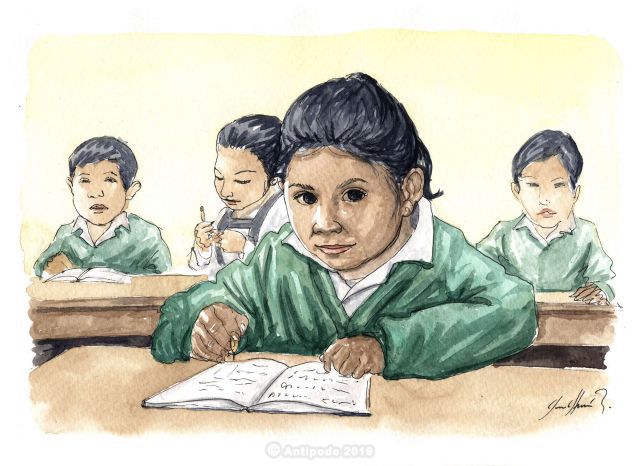

Education system in Peru
What is the educational and school level in Peru?
Officially, and according to the Constitution, education in Peru is free and compulsory at public school until secondary school. However, the reality is quite different part this declaration of intent.
Like health sector, divide between urban and rural school is obvious. Those are intrinsic problems of country life: education centers are frequently far from children’s houses (several hours walk a day are often necessary); reality of children in countries is very different from cities (they must participate to family tasks, take cattle to pasture, chop wood, etc.). Moreover, intercultural-bilingual education is more a wish than a reality (limiting education opportunities for children of indigenous people) and often, there is only one teacher for every levels. So, the compulsory character of education is severely limited by the geographical situation.
Furthermore, the compulsory character must be relativize too. Officially, school is free and inscription isn’t conditional on any payment. Nevertheless, the inscription to APAFA (Parents’ Association) is obligatory and relative to the “standing” of each institution. Nowadays, when the question is subject of debate, requirement to buy new scholar books (with pressure exerted by large editions) as well as a uniform is a reality for a great number of institutions, even public ones, while its obligation is prohibited by law. For these reasons, quite a few Peruvian families don’t send their children to school, for lack of economic resources.
Among these under-privileged social classes, female population is the most affected. Girls’ education isn’t primary in comparison with boys’ education when the family doesn’t have any resources to send his children to school. The other big barrier to girls’ education is the problem of teenage pregnancies, that force young women of 14 to 17 years old to give up segundaria (similar to school and high school). The lack of access to sexual health forces young women to find work by hook or crook to allow them to live decently with their child, keeping them from completing their secondary education.
Despite this, education in Peru has distinctly improved. Rural exodus encouraged children to go to school (more accessible in cities rather than countries: by coming in town, children are borne by a parent, a friend, a well-known from the village, and come back during holidays). Hence, illiteracy rate has improved, being below the 90% during the 2000s. In spite of the difficulties mentioned, efforts to improve rural education are reals and the economic growth Peru knows for the past 10 years gives more resources to the State to support these efforts; education –primary- has clearly improved in regards to what it was 15 years before.



